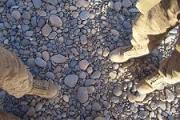The Iraqi air force in two years will be flying a new fleet of single-engine turboprops as counter-insurgency (COIN) aircraft. See the contract solicitation, posted by the US Air Force, here.
The requirement limits the potential bids to companies that have an aircraft that a) is already in wide use and b) is powered by the Pratt & Whitney Canada PT6 engine.
That narrows the bidders to four that Defense Tech can think of: the Embraer EMB-314 Super Tucano, the Hawker Beechcraft AT-6 Texan, the Korean Aerospace KO-1 Wong Bee and the Pilatus PC-9M.
Not to play favorites, but Defense Tech humbly suggests this means there are only two serious candidates: the AT-6 and EMB-314 -- with the AT-6 gaining a huge advantage from the "Made in America" sticker stamped on the program's marketing literature.
But don't count out the Brazilians with the Super Tucano. Expect the executives in Sao Jose Dos Campos to propose moving the EMB-314 assembly -- or opening a second production line -- to Florida, if they win the contract.
Keep your eye on this program. This could be the first of many such requirements for a dedicated counter-insurgency aircraft fleet to come down the line, both abroad and in the US.




 Reply With Quote
Reply With Quote


 And I get to do it again in a few months. Seriously, I hope big Military can see the need for a dedicated COIN aircraft. Apaches are nice but very expensive.
And I get to do it again in a few months. Seriously, I hope big Military can see the need for a dedicated COIN aircraft. Apaches are nice but very expensive.




Bookmarks